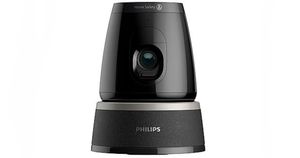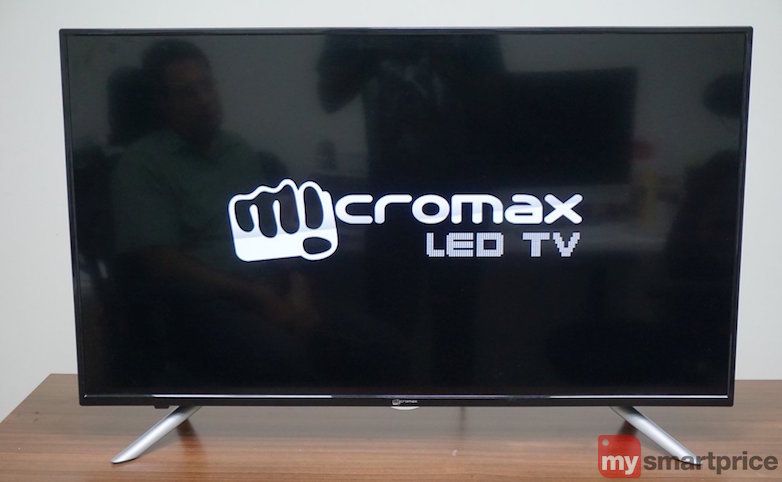
If you’re the kind that believes everything shown in Bollywood films, you’d assume that Indians love two things – maa ke haath ka gajar ka halwa and, of course, maa herself. Then again, you can take that with a fistful of salt because Bollywood films also depict brain transplants without any hint of irony. However, what we all unequivocally love is the heady dopamine rush that comes with snagging a killer deal. Needless to say, when I dug up the sales data for TVs, one particular segment stuck out – the ultra-budget 40-inch TVs sold by Indian manufacturers.
The Micromax 40B5000FHD, in particular, has lately been flying off the shelves quicker than Old Monk does a day before Gandhi Jayanti. And why wouldn’t it? After all, that’s a 40-inch TV being sold for less than half the price of the LG, Samsung, or Sony equivalents. However, let’s not forget that there’s no such thing as a free lunch. If a TV costs half as much as it should, it could very well be because it’s half the TV that it should be. So is this Micromax 40 incher the holy grail of cheap but brilliant TVs, or is it just a cut-price trap? Well, there’s only one way to find out.
Deceptively Cheap
Rip off the packaging and you’re greeted with a pleasant surprise. The TV doesn’t look cheap at all. In fact, it belies its throwaway price with a reasonably slim bezel and petite silver stand. Although the plastics used are of the cheap and shiny kind, you’d have to stick your nose up against the TV to figure that out. In effect, as cheap and shiny as the front fascia might look up close, it still appears impressive as a lithe piano black finished frame from a distance.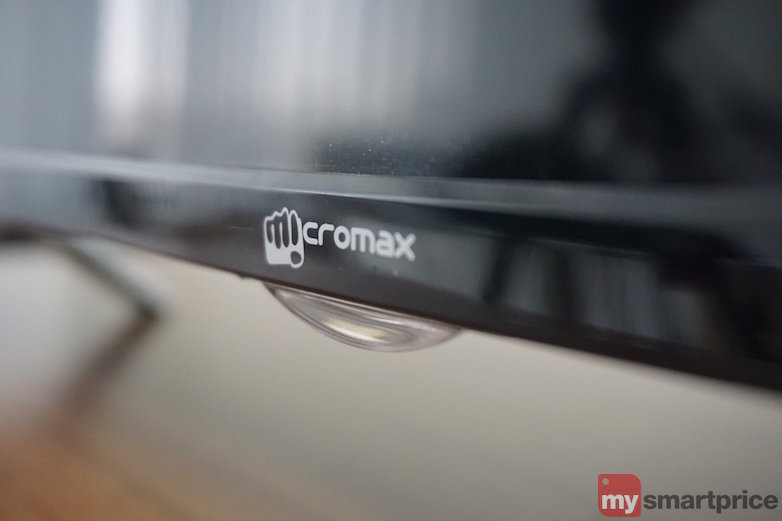
It’s the same story with the TV stand as well. The Micromax 40B5000FHD is supported on what’s essentially a pair of inch-thick plastic sticks with a footprint of eight inches each. Under normal circumstances, this would render the whole shebang a flimsy mess prone to wobbling. However, Micromax’s cut-price build quality means that the TV is too light to put a lot of stress on the delicate stands or even cause any significant amount of wobbling. The TV clearly seems to be playing on its strength. You don’t see a cheap TV use its inherent cheapness to its advantage every day.
The rather terrible fist-shaped company logo seems out of place on the front fascia, which is a good thing because the design theme underpinning the Micromax 40B5000FHD is quite minimalist. Even the transparent nub at the centre of the bottom edge looks great when lit up with the blue status LED. In a nutshell, when viewed from the front, you’d be hard pressed to believe that this rather nice looking TV is priced at par with those bearing half the screen size. The illusion of a sleekness breaks the moment you take a gander at the unit from the sides. The TV won’t win any awards for slim design, but that’s moot considering it’s unfair to even expect slim design at this price.
Getting the Basics Right
So far we have established that the TV looks better than anything in its price range and most beyond the same, but how well is it put together? Not very, to be brutally honest. Remember how I had mentioned earlier that this Micromax TV doesn’t look cheap at all? Well, the operative word here is ‘look’, because the TV sure feels like it was made on a budget. The plastic quality is low-rent and the finishing suspect, whereas the uneven panel gaps and poor fit and finish levels betray its good looks upon closer inspection. A tell-tale sign of the TV’s cut-price construction is its sheer lightness. I have held Blu-ray players that were heavier than this 40-inch television.
As far comfort and ergonomics are concerned, the Micromax 40B5000FHD does the job pretty well thanks to a basic, but well-designed remote control. It has all the essential buttons such as Menu, navigation, Enter, Exit, Source, Volume, and Channel clustered and segregated logically for easy and intuitive usage. The plastics used may be hard, shiny and feel cheap, but that’s par for the course at this price range. For the times when you misplace the remote control, the TV itself has physical buttons at the rear left-hand side covering essential functions such as Power, Source, Volume, and Channel functions.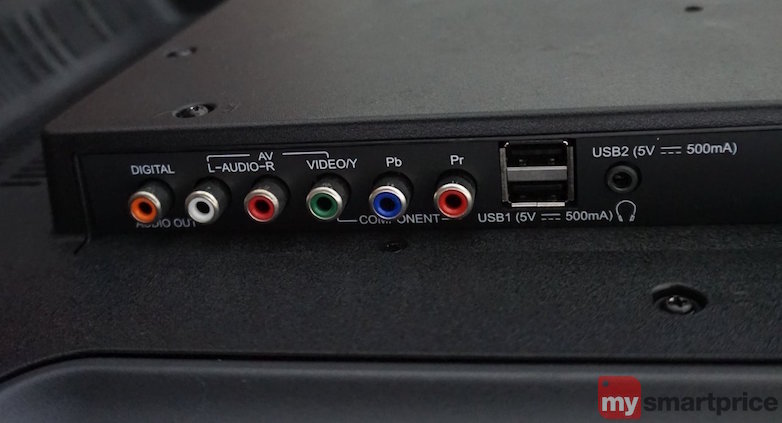
The connectivity options are standard, with two HDMI ports (albeit with no audio return channel support), single composite and component inputs, legacy RF port, D-Sub (VGA) input, and a pair of 3.5 mm TRS jacks for PC audio as well as headphone outputs. Nothing fancy here, but it’s still pretty decent for a TV that costs this much. Micromax has thoughtfully made all I/O ports wall mount friendly, which is a great thing considering it has also included wall mounting bracket in the box. It must be noted that sort of generosity is quite rare at this price range.
What impressed me the most about this TV is the very presence and ease of enabling the 1:1 pixel mapping feature. It is absolutely crucial for any modern video source supporting full colour gamut and the RGB colour space such as computers, videogame consoles, and high end Blu-ray players. This feature can be enabled by choosing the “Full” option from the “Aspect Ratio” setting within the “Picture” tab in the setup menu.
The TV’s capability to handle USB playback is nothing great to talk about. The interface is poor and not very responsive, but thankfully it supports most major video file formats. When calibrated correctly, the TV consumes significantly less amount of power than the claimed power consumption figure of 70 watt. I recorded an average power consumption of 52 watt, which is par for the course for TVs of this screen size. There’s nothing to complain about here.
All That Glitters…
The Micromax 40B5000FHD has gotten pretty much everything right so far. That’s largely because we haven’t got to the most important aspect – picture quality. The TV might look great when switched off, but powering it on is altogether a different ball game. I wasn’t surprised in the least to find the picture quality absolutely horrendous out of the box. It’s offensive at every conceivable level. From inaccurate colours, blooming, patchy gradients, and general uniformity issues to a thoroughly blocky picture characterised by conspicuous video noise and artefacting at the edges.
Fortunately, this poor showing is largely a consequence of dodgy default settings and image enhancement wizardry gone horribly wrong. Toning down the default sharpness, brightness, and contrast settings, while also disabling all picture enhancement implementations such as noise reduction and dynamic backlighting may not serve as a magic bullet solving all these issues, but it does makes the overall picture quality a lot more acceptable.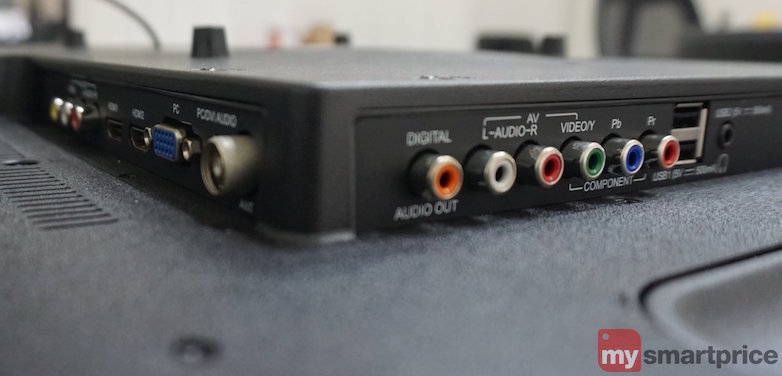
It’s common knowledge that the default settings on the TV are deliberately calibrated to shine through the bright fluorescent lights. The picture appears gaudy thanks to oversaturation and have their brightness and contrast settings exaggerated, with noise filtering and sharpness settings turned all the way to eleven. In short, every TV out there – no matter how good it actually is – is set up to appear absolutely horrendous out of the box.
For this reason, I make it a point to calibrate every review unit using the Spears and Munsil HD Benchmark Setup and Test Disc. The Micromax 40B5000FHD was no exception. The initial visual adjustments mitigated the picture quality gremlins to some extent, but that wasn’t nearly enough. For more accurate hardware calibration, I employed Datacolor’s Spyder colorimeter. The optical sensor on the colorimeter accurately gauges the brightness, contrast, and saturation levels, which is then used to calculate the optimal white point.
The hardware calibration essentially confirmed the observations made in the visual set up. It’s not possible to improve the picture, without making extensive changes at the video driver level. The results are still sub-optimal. In short, the TV’s LCD panel and the video processing hardware aren’t up to the mark.
It is important to remember that these image correction measures require the TV to be hooked up to a computer and a hardware calibration device. That’s hardly the ideal use scenario, as a vast majority of the user base will only connect the TV to a satellite TV STB, Blu-ray/DVD players, or videogame consoles. For this reason, the TV has been evaluated sans the Spyder hardware calibration for the rest of the review.
Objective Picture Quality Tests
The TV had already showed distinct signs of black crush; that is, the lack of black detail in darker scenes. The black level test image confirmed this observation, as the TV wasn’t able to render the darkest shades from the pure black background. However, what’s worse was the presence of noise in the black swatches, which is a clear sign of a poor video processing circuitry. The TV fared slightly better in the White Saturation test, by resolving all but the final two against a pure white background. The presence of bloom in the brighter tints was concerning, and this will rob details in brighter scenes.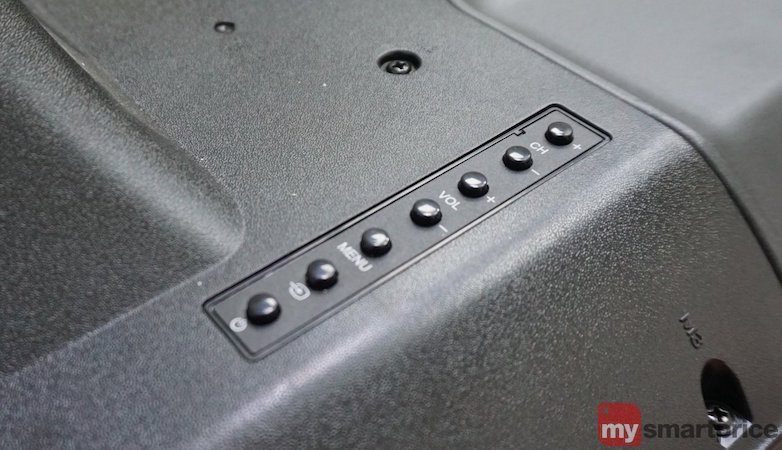
The contrast test image conclusively shows how Micromax can offer 40 inches of real estate at a shade over twenty thousand rupees. By skimping on the LCD panel and associated video processing hardware, of course. The blue, red, magenta, cyan, and green gradients in the test were barely distinguishable at the extremities, which explains the colourful images exhibiting high levels of contrast appear sub-par on the TV. The problems unfortunately don’t end at gradient distinction. The overall uniformity is also disappointing, with a fair deal of colour impurity and wide variation evident within the gradients.
The gradient banding test is a great way to gauge the colour depth of the panel and evaluate the video processing circuitry. The Micromax 40B5000FHD fared poorly as the greyscale gradient appeared blocky and lacked uniformity, which is a clear indication that the panel employed is neither truly 8-bit. Make no mistake, most TVs at this price range incorporate 6-bit panels with dithering/FRC (Frame Rate Control) to emulate addition colours; however, the lack of uniformity shows that the panel and the video processing component just aren’t able to render the complete gamut of colours. The greenish/pinkish discolouration evident in the lighter sections of the gradient only underscores the TV’s limited colour gamut.
The sharpness pattern revealed the reason behind the TV’s inability to render a crisp image without rendering the picture blocky due to excessive edge accentuation. It was hard to find the optimum level of sharpness despite extensively toying with the sharpness setting. The image is either too soft or too hard, with the latter being more preferable even if it isn’t nearly perfect. The sharpness test also showed the extent by which the TV’s gamma levels were off, which was a lot. The gamma test further revealed that the levels varied wildly for individual red, green, and blue components. The TV grossly underperforms when it comes to colour accuracy.
Subjective Blu-ray Tests
Test patterns are one way to pinpoint the strength and weaknesses of any display, but the true extent and impact of these parameters is only apparent when you evaluate the device using real-world applications. That’s why I fall back on my carefully selected suite of Blu-rays and videogames to reveal the true DNA of the display in contention. Being intimately familiar with the source material means that I know how it should ideally appear in a good display and consequently catch any underlying display issues.
The grossly underrated 2009 sci-fi flick Pandorum is a brilliant Blu-ray and a great tool to expose contrast performance and ability to resolve black details. As expected, a worrying amount of black crush was evident, with a lot of darker details just dissolving into the background in the film’s predominantly dark scenes. The tell-tale noise in the darker shades of grey witnessed in the static test patterns was fairly visible. The Micromax 40B5000FHD’s mediocre contrast performance meant that you either have to settle for scenes featuring a dynamic blend of light and dark areas appearing flat, or turn up the contrast and contend with excessive bloom.
The TV’s inability to resolve gradients smoothly was palpable in scenes lit up with a single shade of green, blue, or red. These scenes look blotchy, inconsistent, and make the movie appear like a badly drawn cartoon. This is more of an issue in cult classic British horror flick The Descent (2005), where these type of scenes make up most of the movie. Be it the orange accents in the birthday dream sequence, green ones in the hospital scene, or the red colour cast in the iconic first-contact scene – everything appears blocky, distorted, and far removed from the sort of colour reproduction you expect from a good TV. The amount of video noise and artefacting evident in the more complex light/dark parts of the film underscore the inability of the video processor to keep up with the panel, which isn’t all that great to begin with.
Things improve by a great degree in movies dominated by bright scenes. Blu-rays such as Shaun of the Dead, Zombieland, and The Babadook characterised by muted colours looked fairly decent, with the exception of the brightly coloured “Enjoy the Little Things” scene from Zombieland, which lacked vibrancy. The other two Blu-ray movies look fine, if you can ignore the inaccuracy of skin tones and a slight loss of details in the brighter scenes.
Penny Wise, Pound Foolish
You don’t have to be a rocket scientist to know why Indian consumers are making a beeline for this ultra-cheap TV. Prima facie, getting a 40-inch TV for a little over Rs 20,000 seems like a terrific deal, but the true measure of a TV’s value should ideally be determined by the level of performance you get for your money. Unfortunately, it isn’t much in the case of the Micromax 40B5000FHD. I can overlook the cheap construction, especially when the designers have taken pains to make it look more expensive than it really is. However, the TV’s abject inability to render accurate colours, offer decent black details, acceptable contrast, or maintain overall image uniformity cannot be excused. After all, once you have got over the looks and the novelty of the features has worn off, all that matters in a TV is whether it can bowl you over with stunning picture quality.
In this case, although you get a lot of screen real estate for very little money, the TV offers very little in terms of real substance. If you can’t settle for anything smaller than a 40-inch TV, you can put about eight grand more and buy the Panasonic Viera TH-40C200D LED-backlit LCD TV, which is vastly superior when it comes to the thing that matters the most – picture quality. If that’s out of your budget, you can add about five grand and sacrifice an inch of screen size for the 39-inch Sharp 39LE155 TV. Throwing in a few grand extra for good picture quality is a much saner option compared to tolerating a TV with unacceptable picture quality. At the end of the day, that what matters the most.

